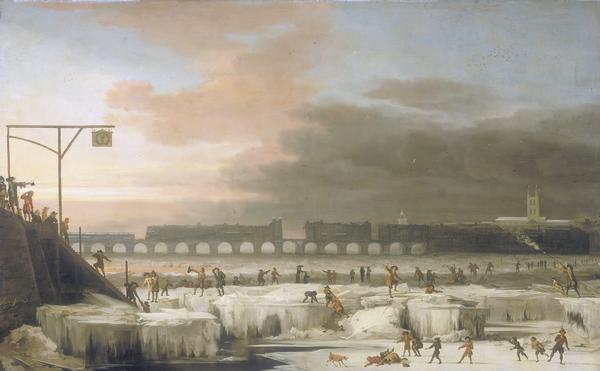In addition to being a poet, astronomer, chemist, and general layabout, Lomonosov mastered the art of the no-look diary entry.
Hello, Cabinet patrons! In this installment, I bring you the story of Mikhail Vasilyevich Lomonosov (1711-65), Russia's answer to Benjamin Franklin and Johann Wolfgang von Goethe -- father of Russian science and poetry and all-around Mensch.
Lomonosov grew up on the shores of the White Sea on Russia's northwest coast, the son of a fisherman and descendant of the Pomor settlers in the region. No quick study at fishing, in 1730, at age nineteen, Lomonosov struck out for the big city, Moscow. He was admitted to Russia's Harvard, the unfortunately-named Slavic Greek Latin Academy, completing a twelve-year (!) degree in five years. Later, he was able to study chemistry and mining for two years in Germany at the University of Marburg. There, Mikhail picked up the German language, picked up a German wife, Elisabeth Zilch, and picked up a svengali, the eminently-named philosopher, Christian Freiherr von Wolfius.
Lomonosov's chemistry lab/breakfast nook.
(Northwestern Univ.)
Returning to Mother Russia in 1741, Lomonosov taught physicks and chemistry at the Russian Academy of Science, where he encouraged his students to call him "Doc Lommy" and "Teach." He inspired young mind at the RAS until 1755. (Except for a short interlude in 1743, during which he was house arrest for personally insulting several prominent faculty members!) Lomonosov left the RAS to found the venerable Moscow State University (MSU), now also known as the Lomonosov Memorial Moscow State University.
Sketches by Lomonosov of the Northern Lights. Reportedly, his students marveled at his chalkboarding expertise.
(Northwestern Univ.)
Lomonosov was a true polymath during a century of great Renaissance (well, not that Renaissance) men (and women). Here's a sampling of some of his many interests and achievements:
- An enthusiastic amateur astronomer, he hypothesized the existence of Venus' atmosphere, which prompted Czarina Elizabeth to christen the planet "New Siberia."
- He made major improvements to the telescope, co-inventing what is now known as the reflecting or Herschelian telescope, a "window on the West," which, on imperial decree, he used to spy on the various palaces of the absolute monarchs of Europe.
- He published a catalog of over three thousand minerals in 1745, later a popular source for light readings and entertainments at St. Petersburg's Paris-style salons.
- Lomonsov organized an expedition, helmed by Vasily Chichagov, to find the Northeast Passage sea route between the Atlantic and Pacific Oceans. Wisely, Lomonsov avoided actually going on this ice-hampered journey through the Frozen North.
- He was also a prolific mosaic artist! He set up a glass factory to produce the materials for his forty giant mosaics, most commemorating Great Moments for the Fatherland.
- A venerable writer, Lomonosov wrote a history of Russia, and reformed Russian poetic language, producing a reformed grammar combining vernacular Russian with Old Church Slavonic, an innovation he used to write several poetic works. His "Ode to Carolus Linnaeus' New Genus-Species Classification System" was written for performance on his election into the Royal Swedish Academy of Sciences in 1761.
- He was also interested in icebergs, the properties of mercury, organic chemistry, bejeweled eggs, optics, continental drift, and wig design!
Russian empress (and amateur natural scientist and animal husbander) Catherine the Great visits Lomonosov in 1764. (Ivan Fyodorov, 1884)
Lomonsov is still a big deal in Russia, seen as the man who brought the ideas of the Western European Enlightenment to darkest Russia. He is to science what Puskin is to Russian literary culture or Rasputin is to well-endowed hemophilia-curing mystics.
Let's have a trio of huzzahs! (or Ура's!) for Mikhail Lomonsov!









.jpg/800px-Kindermord_(Pieter_Brueghel_d._J.).jpg)